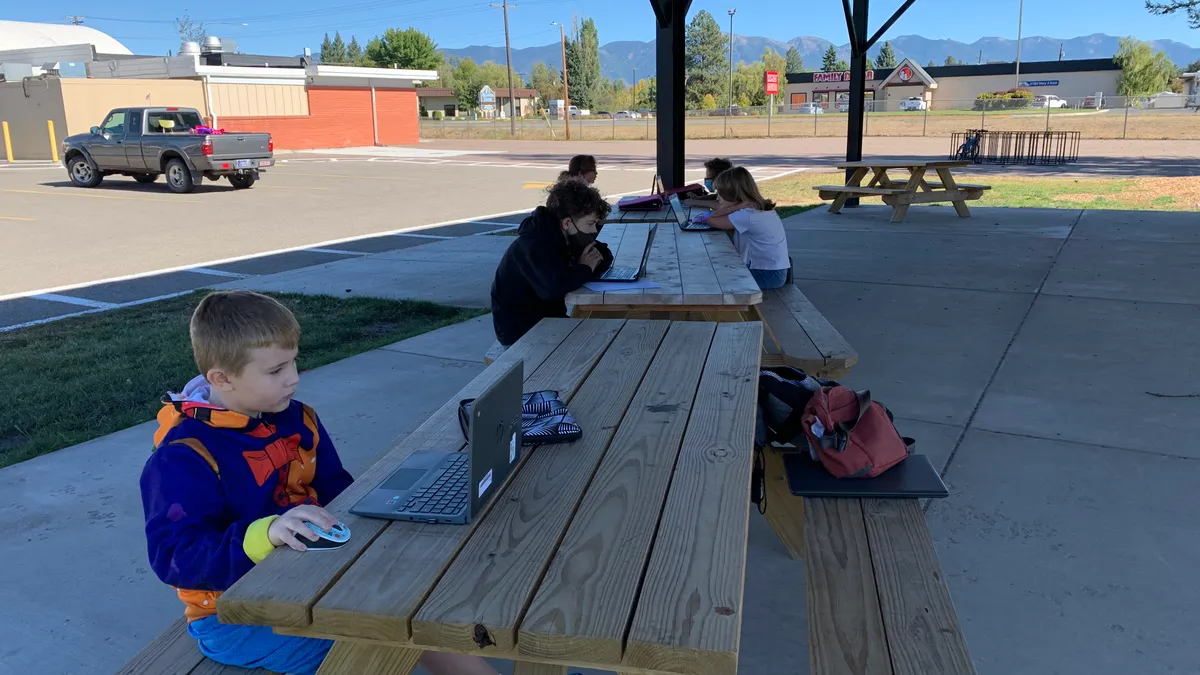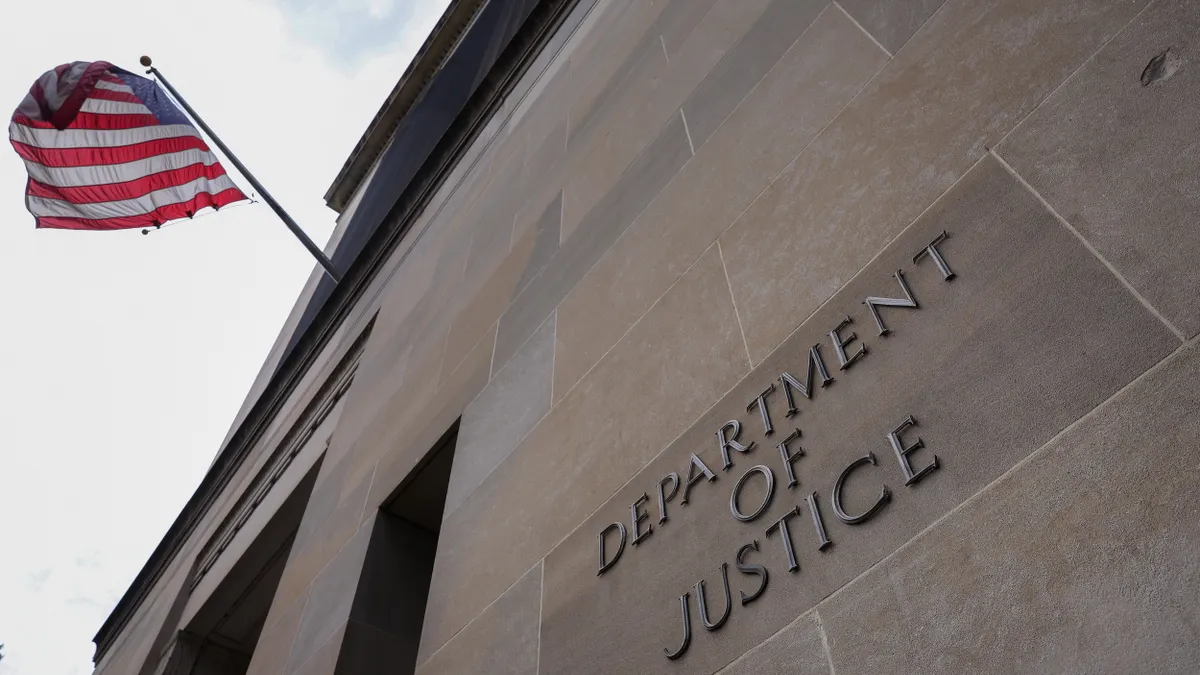Two of the three school buildings in Evergreen School District #50 in Kalispell, Montana, have aging air systems that provide poor ventilation and lack air conditioning. The district is setting aside about 75% of its Emergency and Secondary School Emergency Relief III funds for HVAC replacements later this year.
But even after a year of planning and designing for the upgrades and more than two years to go until the Sept. 30, 2024, ESSER deadline for obligating those funds, the timeline is making Superintendent Laurie Barron nervous.
In the best-case scenario, the project, which went out to bid this week, would finish before the start of next school year, with construction occurring over the summer to be less disruptive to student learning.
In the worst-case scenario, the district could fail to receive any acceptable bids, equipment could face shipping delays, and the project experiences a shortage of construction employees. The district would have to return any money not spent by the deadline.
"The money that has been put into schools to support us has been nothing short of what feels miraculous, right?," said Barron, whose 700-student, K-8 district sits about 40 minutes from Glacier National Park. "But with all the stipulations on it, there's that stress and anxiety of will we be able to expend it in the most appropriate and effective ways to benefit staff and students. And so, that's my concern."
Many other school system leaders are also concerned about the obligation and spending deadlines for ESSER funds going to school building upgrades, because these types of projects typically need a long runway from conception to construction to completion.
"I can only imagine if we're having these struggles and we planned way far ahead, well, there are going to be struggles for our schools across America."

Laurie Barron
Superintendent of the Evergreen School District #50 in Kalispell, Montana
Last month, more than 30 organizations, consisting of education groups, engineers and health and environmental advocates, signed a letter to U.S. Education Secretary Miguel Cardona seeking an extension through December 2026 for the timeline school districts have to expend funding for school construction and capital projects under the American Rescue Plan, which has the most funding dedicated under ESSER. ARP is also known as ESSER III.
Updating school facilities can ensure healthier and safer school environments, the letter said. But if the timeline for ARP funding is not stretched, "then critical school facility upgrades and major capital improvements may not be a possibility for many districts across the country," the letter stated.
Is an extension possible?
Whether the ESSER timeline can be extended is what organizations are researching now.
Sasha Pudelski, director of advocacy for AASA, The School Superintendents Association, one of the organizations that wrote to Cardona, said the Education Department is receptive to hearing concerns about the timeline.
Preliminary data AASA has gathered from superintendents across the country indicate supply chain issues could be limiting a majority of districts’ ability to spend ARP funds on HVAC upgrades and other key construction-related projects, Pudelski said.
It's unclear if the Education Department has the authority to make that extension or if congressional approval is needed through an appropriations bill or stand-alone legislation.
Luke Jackson, an Education Department spokesperson, said in an email the department has received the letter, values the feedback, and plans to respond to the authors directly.
The ARP statute says funds are available to the department through Sept. 30, 2023, but the department has applied to this deadline a principle called the “Tydings Period,” found in the General Education Provisions Act, which allows another 12 months, or through Sept. 30, 2024, to obligate those funds.
Districts then have a liquidation period of up to 120 days after that date to finish drawing down the money, said Julia Martin, legislative director at Brustein & Manasevit, a Washington, D.C.-based law firm specializing in education, workforce and grants management, in an email.
If a proposed extension took a legislative route, it would have to undergo scrutiny from the Congressional Budget Office to determine whether it would cost extra money, as well as debate among lawmakers over what constitutes the period of emergency for those "emergency" funds, Martin said.
The U.S. Department of Treasury recently issued a final rule that allows state and local fiscal recovery spending, known as SLFRF, through Dec. 31, 2026, but has a Dec. 31, 2024, obligation deadline. It's unclear whether that could serve as an example for extending education ARP spending.
Unmet building needs
Because of the expense and planning for school capital and upgrade projects, it's often a district initiative that gets delayed in favor of funding instructional programs, Pudelski said.
She also said even a three-year period can be tight for certain building upgrades during non-COVID-19 times, when school systems didn't experience the scale of supply chain delays and staff shortages currently faced.
A 2021 report from the 21st Century School Fund, the International Well Building Institute and the National Council on School Facilities found the U.S. is underinvesting in school buildings and grounds by $85 billion each year. A Government Accountability Office report in 2020 found 41% of districts required HVAC systems upgrades or replacements in at least half their schools. Of the 55 schools GAO visited in six states, officials in about half described HVAC-related problems in their buildings, such as older systems that leaked and damaged flooring or ceiling tiles.

Using COVID-19 relief funding to replace HVAC systems in schools is a popular initiative, according to data collected by Burbio and FutureEd. A Feb. 1 analysis of COVID-19 relief spending plans from 2,742 districts in 48 states showed 1,433 districts plan HVAC upgrades. Districts are also planning school facility repairs to prevent illnesses, create or improve outdoor classrooms, and provide personal protective equipment.
Barron, the Evergreen School District superintendent, says replacing the HVAC systems in the district's two schools "would have remained a dream" if not for the ESSER funding. She declined to say the exact amount the district has budgeted for the project because the bidding period doesn't close until Feb. 18, but did say it's several million dollars. The district's regular annual budget is just over $5 million.
"We would have never been able to do this, so we're really pleased with the opportunity to improve health and safety and development," Barron said. "I mean, it's a once-in-a-career opportunity."
But Barron will be closely watching the calendar, hoping her district's project stays on track. She also is concerned about colleagues in other districts that don't have full-time maintenance staff to help plan for and organize construction projects.
"I can only imagine if we're having these struggles and we planned way far ahead, well, there are going to be struggles for our schools across America," Barron said







 Dive Awards
Dive Awards












